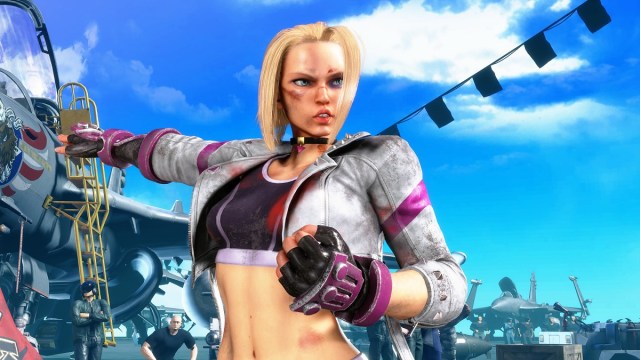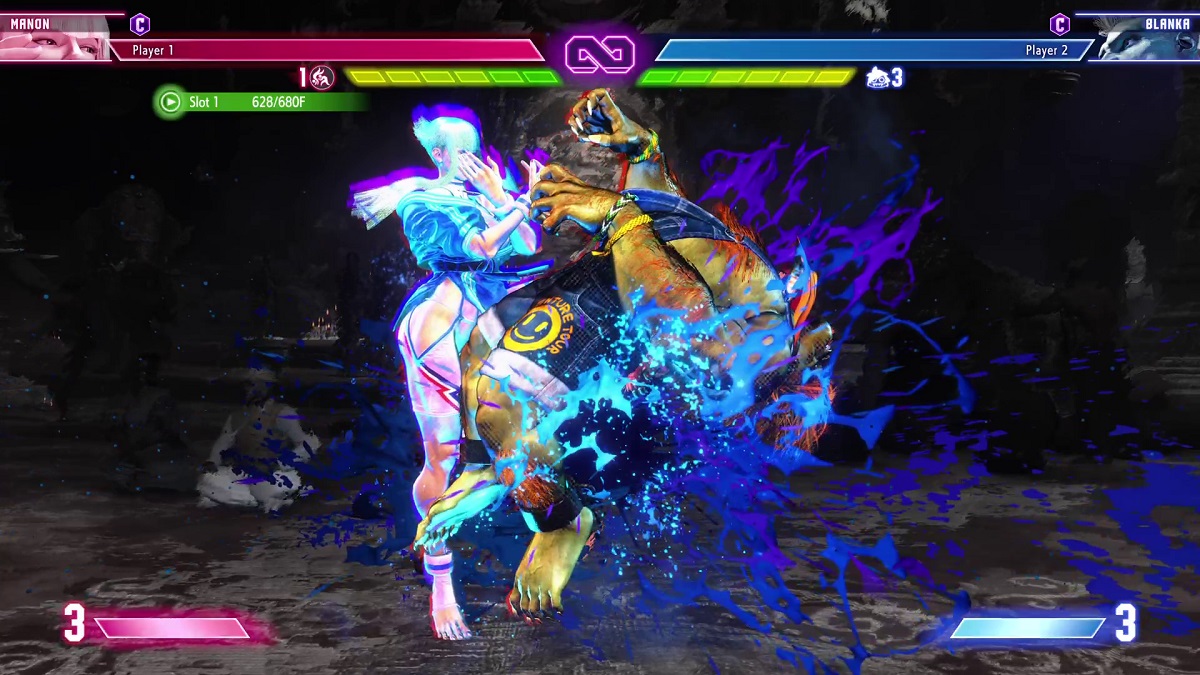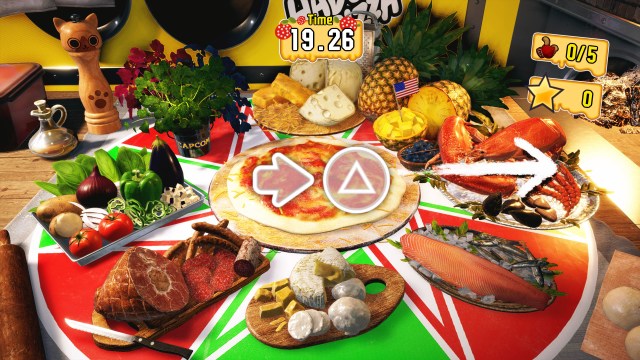I didn’t hear no bell…
Every fighting game franchise owes an unpayable debt to Street Fighter.
Oh, sure, Street Fighter wasn’t the first slugger on the block, and we can tip our hats to forerunners such as Technos’ Karate Champ and Irem’s Yie Are Kung Fu for pioneering the genre itself. But, inarguably, it was the 1991 arrival of Capcom’s Street Fighter II that truly popularised the one-on-one fighter on a global basis, reinventing competitive gaming, garnering millions of sales in the arcade and home market, and galvanizing itself as one of the premier franchises in history.
Street Fighter II wrote the blueprint that would be followed by every franchise eager to raise fists and feet in its wake. And while a handful of these excellent fighters would go on to achieve amazing success in their own right — building communities, breaking pop culture, and raking in beaucoup bucks — ultimately, they all pay homage to the king. When Street Fighter has the throne, you can’t usurp it
In 2016, however, something went very wrong. That year, Capcom released Street Fighter V, bringing about one of the worst launches in the company’s history. As a fighter, SFV was solid, but the launch was a disaster. Capcom delivered an uninspiring, threadbare title, lacking rudimentary features, missing trademark facets, and sporting a miserable U.I. and abominable netcode. Worse still, the title was devoid of charm and personality. It wasn’t that Street Fighter V was terrible, it was… empty. Bland. An avatar bearing a familiar name but infused with an apathy that left its world cold and its characters hollow.
In the aftermath of this maligned release, Capcom reevaluated itself. Beginning with 2017’s Monster Hunter World, the studio proceeded to knock out a string of hugely successful releases, leading to what is currently the most prosperous period in company history. And this week, seven years on from SFV‘s notorious debut, the prodigal son returns, determined to showcase improvement, win back its audience, and deliver a top-notch sequel that not only aims to surpass its predecessor, but also stake a claim as one of the greatest entries in the series’ decades-long history.

Street Fighter 6 (PlayStation [PS5 reviewed], PC, Xbox, Arcade)
Developer: Capcom
Publisher: Capcom
Released: June 2, 2023
MSRP: $69.99
Capcom has openly expressed its intent to conceive Street Fighter 6 as something of a “Make Good” for the misgivings of Street Fighter V, while simultaneously presenting a new era of evolution for the legendary series. SF6 bears the hallmarks of this evolution not only in its core fighting systems, but across every element of its presentation. This revitalized approach includes a ground-up redesign of the audio/visual aesthetic, as well as the implementation of the celebrated RE Engine, in a bold effort to present the most feature-filled launch of a Street Fighter title to date.
While “Evolution” might have been the intended term, “Polished” is a far better word to describe the precision with which Capcom has addressed its sequel. The team has not only ensured that the key elements of the fight itself are to the highest standard of player expectation, but also that all of the smaller, equally important details are also addressed. SF6 sports a better ranking system, more attractive menus, fun side activities, slicker online capabilities, battle damage, cooler Vs. screens, sportsmanship rewards, segmented downloads, improved player profiles, and new training tools.
This is not to mention the inventive “Modern” and “Dynamic” control schemes, as well as the sequel’s fantastic range of overdue accessibility features. And we’re still only scratching the surface of the quality on display here.
Welcome to the Punch Party
For the majority of fighting game fans, “Fighting Ground” & “Battle Hub” are where it’s at, packed out with an array of familiar modes including Online & Offline Vs., Team Battle, Combo Trials, Training Mode, and Character Guides. Also on deck are individual Arcade Stories for our World Warriors, as well as the comical Extreme Battle, which allows for chaotic throwdowns disrupted by a variety of modifiers.
It is in Fighting Ground that players will become best acquainted with Street Fighter 6‘s 18-strong roster, which features familiar faces such as Ken, Blanka, and Ryu from Streets, mixed in with fan favorites such as a (particularly foul-mouthed) Cammy and my own main squeeze, Juri. While some have balked at the concept of launching with “only” 18 characters, it should be noted that SF6 hosts some of the best iterations of these characters to date. Equally of note are seven newcomers — all of whom are extremely inviting, and many of whom boast mechanics that are wholly new to the franchise.
It is testament to the SF6 roster that these new fighters have already been warmly welcomed by the fanbase. Marisa, Manon, Jamie, and co. have created perhaps the biggest buzz newcomers have ever received in SF history. For the first time in a very long time, there is not only a desire to master multiple characters, but almost a stalemate of choice when it comes to experimenting with the debutantes.
Hope you like JP. You’ll be seeing a lot of that prick online.

Street Fighter 6 cast of skull-smackin’ reprobates is given life through the sequel’s trump card: it’s vibrant aesthetic and full-throated personality. Boasting an “underground” vibe, SF6 feels electric, bursting with character and charisma, and awash in lurid color and bass-heavy beats. While the graffiti-inspired visuals and hip-hop flavor of the piece might not be to everyone’s taste, there’s no denying that SF6 has been jolted with the identity defibrillator that SFV sorely needed — Just try to ignore some of those bars in the background raps. Woof.
Our World Warriors have genuine presence and character, emboldened with fantastic models, series-best animation, and charismatic voice work. Street Fighter 6 is dripping with personality and bubbling with dynamism. Its exciting presentation style, superbly designed roster, myriad special effects, great character themes, and selection of colorful and lively arenas are the pulsating heart of the entire title.
It feels whole. It feels vigorous. It feels alive.

Driving Miss Crazy
Ironically, it’s redundant to spend too much of your precious time describing Street Fighter 6‘s actual gameplay, given Capcom’s confidence in having dropped three betas and a demo to the player base. (You can also read my thoughts in previous articles). But it goes without saying that, once the bell rings, Street Fighter 6 offers spirited, breathless combat, substituting a modicum of speed from its predecessors for increased impact. The RE Engine is a surprisingly great fit for 2.5D fighting, (whether by design or by accident), and allows for stellar animation, smooth movement and dazzling effects.
The backbone of Street Fighter 6 is the Drive System, which allows for the armored Drive Impact, the dramatic Drive Parry, and the sneaky Drive Rush abilities, as well as an array of Overdrive moves. It is through management of this meter that the player dictates the flow of the fight, ensuring that they have the resources to stay in an advantageous position while being readily open to overspending when victory is in sight.
The key boon provided by Drive is that it provides opportunity for creativity. While SFV suffered from a prison of optimal combos — which essentially saw 90% of players fight in the exact same way — Street Fighter 6 forces moment-to-moment adaptation, based entirely on the given resources of the two combatants at any one time. It is through the Drive skills that we will see more varied combo routes, distinct playstyles, and character evolution in the coming years. This in itself places Street Fighter 6 over other iterations in regard to its meta-changing potential.
And yes, I know that Drive Impact seems too powerful right now… Give it time. We’ll adapt.

The Ballad of Bosch
Essentially a hybrid of Street Fighter and Sega’s Like a Dragon, “World Tour” sees the player create a custom avatar, (a feature that has already resulted in an abomination of ungodly creatures populating the lobbies), before dallying around cityscapes and completing subquests, all while getting into a series of random rumbles on a loosely defined “Search for Strength”. As you progress through this mode, your character hooks up with each of the World Warriors, learning new techniques with which to build a bespoke moveset. Ever wanted to have Hadoken, Flash Kick, Yoga Teleport, AND Screw Piledriver? Well, have I got the character for you, kiddo.
While World Tour does a great job at helping players get to grips with the basics of Street Fighter, it is, ultimately, a lackluster experience. The problem lies in the narrative and its relation to the mode itself. To be clear, World Tour is not a NetherRealm-esque “Cinematic Story Mode”. In fact, upon meeting each World Warrior, the player is treated to a splendid introductory cutscene, before said character chooses to basically stand in one spot and dole out text messages for the remainder of the story. None of the World Warriors interact with each other over the course of the story, generally existing only to offer up new moves, kick your ass in sparring sessions, and passive-aggressively accept your gifts.
Cammy did not want the rom-com DVD.

Always the Son (Son)
World Tour focuses on the adventures of your voiceless protagonist and Everyone’s Favorite New Character, Bosch — a tale of stolen bus stops, a neutered Mad Gear Gang, and the sort of narrative high-stakes that see Bosch kidnapped and Luke telling you to “Go to Jamaica and bring me back a memento” in response. Remember in SFV when Alex thought Dhalsim — DHALSIM — was a carjacker? Well, similarly non-sequitur writing applies here. Only the delightfully heinous JP shines through, easily donning the mantle of the series’ most despicable villain since M. Bison.
Also… Juri seems really fucking depressed. If she wants coffee and a foot rub I’m here for her.
While World Tour isn’t the “Street Fighter RPG” some might have hoped, it’s not without its charm, and represents only one element of the package of great extra-curricular activities. The Arcade Mode unlocks lovely artwork and fun bonus stages; the combo trials are challenging; the avatar builder is hilarious in its Frankensteinian potential, and the Game Center is packed out with rotating Capcom classics, including gems Magic Sword, Final Fight, Super Street Fighter II Turbo, Son Son, and others.
Hey, Super Puzzle Fighter II Turbo is here. That’s worth the price of admission alone.

As those who have played the beta can attest, load times are lightning fast and the rollback netcode is superb, offering the tightest online in Street Fighter history. For review (PS5), I can report that SF6 sports a steady, reliable frame rate when in Performance Mode, though this is at the cost of some crispness on the character models. It should be noted that I experienced some screen tearing on my display when I activated the “Input Delay Reduction” feature, but this may vary with monitors.
Battle Hub represents the more social nature of SF6‘s multiplayer portion, offered as an optional gateway to online matches. Personally, I love it, with its hilariously broken Avatar Battles, awkward emoting, and terrifying rogues’ gallery of custom monstrosities. It makes for a neat hangout if you have no pals like me… (except for my girlfriend Juri, of course.)
You’d probably like me to address the inevitable elephant of monetization, so let’s do it.
Street Fighter 6 follows a seasonal DLC pattern, with the first season of post-release characters already announced. In addition, Capcom will be adopting a “Battle Pass” format for SF6, (“Fighter’s Pass”) with free and premium tracks offering rewards for players. Costumes, colors, avatar gear, and other items will be purchasable via “Fighter Coins” (real currency) and “Drive Tickets” (earned in-game). Each character currently has one alternate costume that can be unlocked through playing World Tour.
The specifics regarding all of the above are expected to roll out in the near future.

You’ve got a lot to learn before you beat me…
While the disappointment of World Tour, and the concerning nature of monetization weighs on the title, it cannot be emphasized enough that Street Fighter 6 is a magnificent fighter. From its wide array of modes and features, through its exciting cast, new mechanics, solid performance, and impressive visuals, Street Fighter 6 is a title that radiates excellence. There was a clear commitment by the team to deliver a thoroughly engaging fighter for both the dedicated SF community as well as curious onlookers, and this commitment has been fulfilled, resulting in a year-best release and a legitimate GOTY contender.
Fighting games are always a tough review. Every player has their own expectations on how any given example should look, control, and flow, with distinct designs speaking to distinct players. This is why we have such a vibrant and energetic competitive scene, populated with such passionate individuals. Regardless, in Street Fighter 6, Capcom has made a declaration to redraw FGC focus onto its flagship fighting title… perhaps the flagship fighting title… and has successfully delivered an outstanding contender for this coming generation of fighting games. Street Fighter is back on the throne.
And when you come at the king, you best not miss.
While not all of the design decisions and ambitious new modes hit their mark, Capcom’s commitment to producing a polished and superlative fighter is readily apparent throughout this stellar release. A compelling roster, exciting visuals, crisp performance, and thrilling mechanics ensure that this prestige sequel is set to champion local, online, and competitive scenes for years to come.
Simply put, Street Fighter 6 is one of the very best entries in series history.
[This review is based on a retail build of the game provided by the publisher.]














Published: May 30, 2023 10:00 am